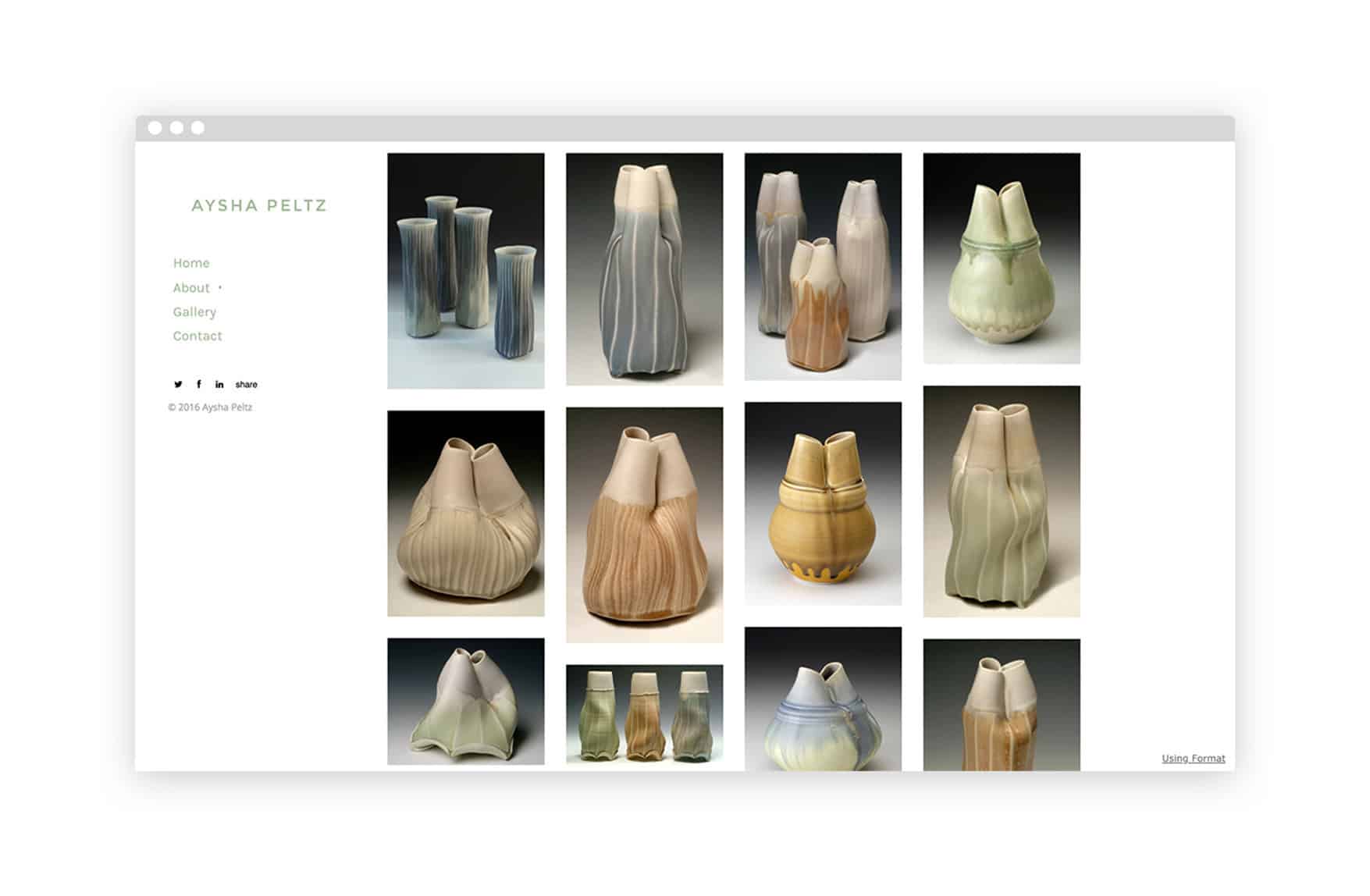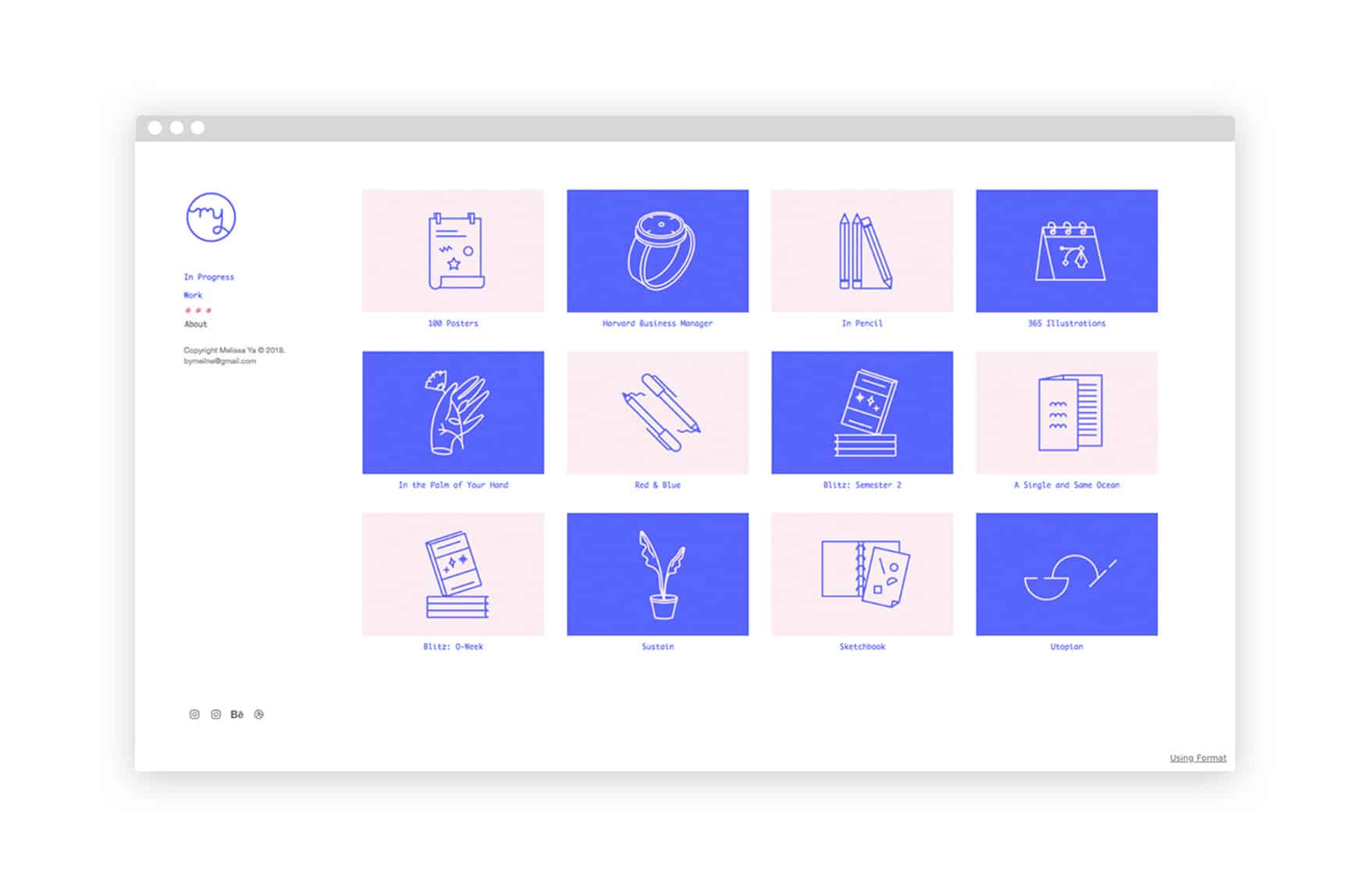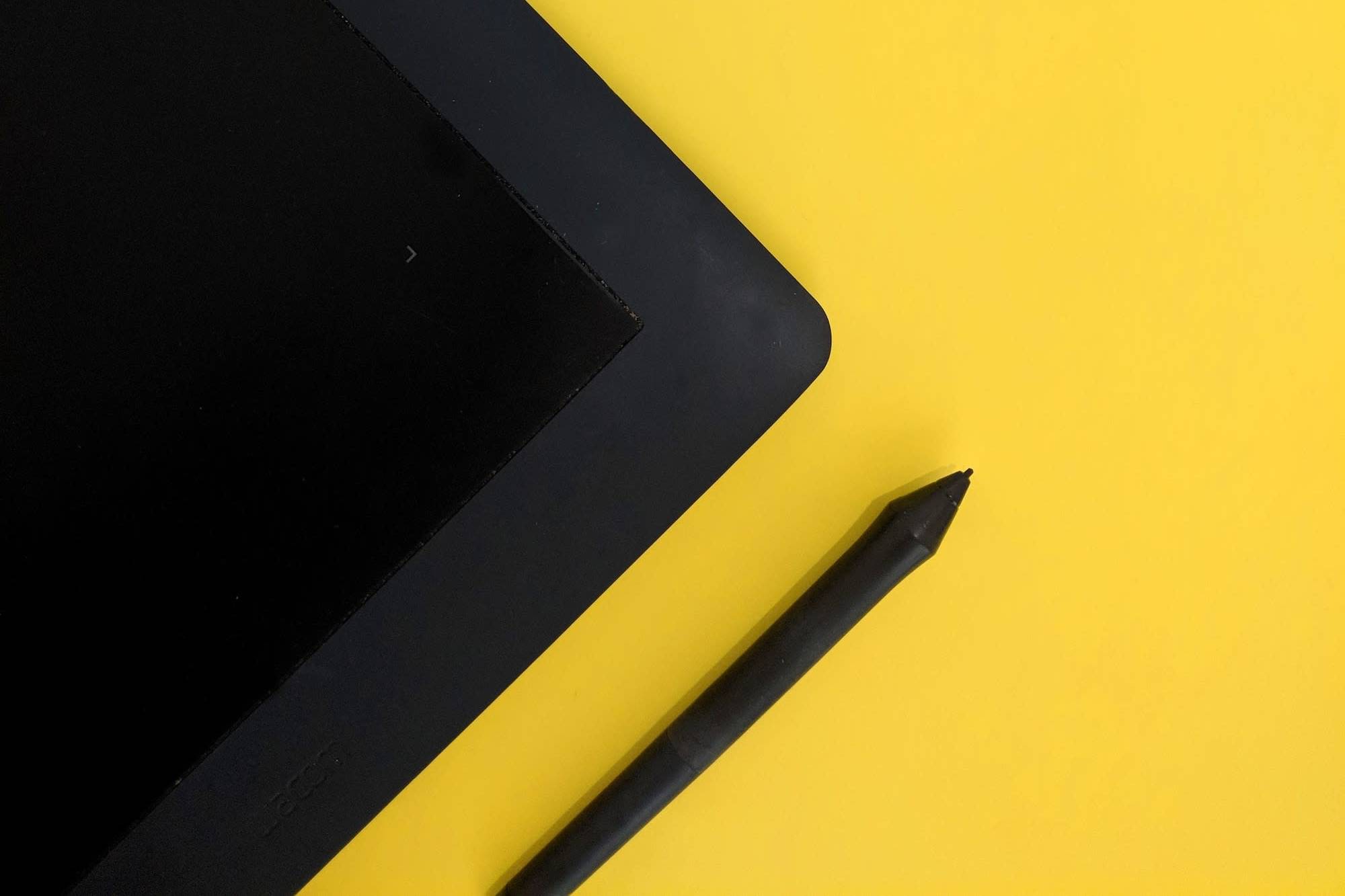Mit jedem Jahr verändert und entwickelt sich das Design weiter. Zu verstehen, was in der Welt des Grafikdesigns im Trend liegt, ist nicht nur für Grafikdesigner wichtig. Deshalb haben wir uns so viele Gedanken über alles gemacht, von Web-Design-Trends und Trends bei der Produktverpackungzu Pantone's Farbe des Jahres und mehr im Jahr 2019.
Wenn du immer am Puls der Zeit bist, was in der Designbranche passiert, kannst du eine frische, innovative Perspektive einbringen - egal, was du kreativ machen willst. Aber was passiert 2019 im Design? Was ist neu und entwickelt sich weiter?
Interessanterweise ist die Grafikdesign Die Trends, die wir für 2019 erwarten, sind eine Geschichte voller Widersprüche. Die Trends, die die Designwelt im Sturm erobern werden, bestehen aus gegensätzlichen Zeitabschnitten, Designästhetiken und Stilen - was den Kreativen die Möglichkeit gibt, die Grenzen zu überschreiten und ihren Designs eine einzigartige Note zu verleihen.
Werfen wir einen Blick auf einige der größten Trends, die 2019 die Designwelt im Sturm erobern werden:
Revolutionen in 3D
Im Jahr 2019 wird eine hyperrealistische dreidimensionale Ästhetik weiter an Beliebtheit gewinnen. Vor allem bei der Typografie gibt es eine bemerkenswerte Verschiebung von traditionellen, flachen Schriftarten hin zu 3D-Meisterwerken, die aus dem Bildschirm herausragen. Die Vielseitigkeit der 3D-Typografie ist für Designerinnen und Designer vor allem deshalb so attraktiv, weil es so viele Möglichkeiten für einzigartige Ausführungen gibt. Dieser Trend funktioniert in fast allen Bereichen: Ob verkürzt oder fett, serifenlos oder serifenbetont, mit oder ohne Schrift - all diese Schriftarten können in 3D zu neuem Leben erweckt werden.
3D-Typografie ist definitiv im Kommen - aber sie ist sicher nicht der einzige Ort, an dem wir diesen dreidimensionalen Trend sehen. Im Allgemeinen bietet 3D-Design Designern den Raum, mit verschiedenen 3D-Elementen zu experimentieren (von einer anderen Perspektive auf Objekte bis hin zu Texturen oder Dimensionen), um einzigartige 3D-Kompositionen zu schaffen, die sich neu, innovativ und faszinierend anfühlen.
Asymmetrische Layouts
In den letzten Jahren war rasterbasiertes Design der letzte Schrei. Da Design-Websites immer beliebter werden, haben viele Designerinnen und Designer begonnen, standardmäßig rasterbasiertes Design zu verwenden. Wie so oft schlägt das Pendel jetzt zurück: Designerinnen und Designer wollen den oft strengen Parametern eines Rasters weitere Ebenen der Komplexität hinzufügen. Hier kommen asymmetrische Layouts ins Spiel, aber das ist auch der Grund, warum immer mehr Kreative in hochwertige Website-Baukästen und Portfolioservices investieren, die weit über ein einfaches Raster hinausgehen (wie unsere Freunde hier bei Format).
Asymmetrische Layouts geben Designerinnen und Designern die Möglichkeit, sich von streng starren Layouts zu lösen und ihre kreativen Muskeln spielen zu lassen, um sich Designs hinzugeben, die mehr Energie und Bewegung haben. Insgesamt können asymmetrische Layouts Designern viel mehr Freiheit und Flexibilität bei ihren Entwürfen geben, aber es ist wichtig zu bedenken, dass ein komplexes Layout von Dingen wie Fotografie oder Illustration ablenken kann, wo komplexere, inhärente Kompositionen von einem einfachen, rasterbasierten System enorm profitieren können.

Die Keramikerin Aysha Peltz nutzt ein asymmetrisches Raster, um ihre Vasen zu präsentieren.
Das Art Deco erlebt ein Comeback...
Art déco ist einer der bekanntesten Trends des frühen 20. Jahrhunderts. Jahrhunderts. Wir gehen davon aus, dass dieser Designstil - mit all seinem Glamour und seiner Opulenz - ein großes Comeback erleben wird.
Wir werden sehen, dass scharfe Metallicfarben (die an den Gatsby-Luxus erinnern), intensive, symmetrische Linien und schmale serifenlose Schriften - alles Markenzeichen der Art-Déco-Ära - 2019 immer beliebter werden, sei es im Webdesign, im Verpackungsdesign, in der Fotografie oder im Tattoo-Design. Gepaart mit einer neu entdeckten Vorliebe für alles Glamouröse ist diese Bewegung eine direkte Abkehr von dem eher rustikalen, vom Erbe inspirierten Stil, den wir in den letzten Jahren im Branding häufig gesehen haben.
...und das ist die Moderne der Jahrhundertmitte auch
Wie wir bereits erwähnt haben, ist 2019 ein Jahr der gegensätzlichen Trends. Daher ist es nur logisch, dass die Jahrhundertmitte wieder auflebt, während das Art Deco wieder ins Rampenlicht rückt. Dank seiner minimalistischen, klaren Linien und seines reduzierten Looks wird dieser Stil oft als funktionale Antwort auf den übertriebenen Protz des Art déco gesehen.
Dieser Stil wird vor allem mit einer Revolution im europäischen Möbeldesign und natürlich mit den kultigen Werbeillustrationen der Nachkriegszeit in Verbindung gebracht. Wir sehen, wie sich dieser Geist in den Illustrationsstil einschleicht und andere Designelemente durchdringt, indem er eine Balance zwischen modern und vintage, zeitgemäß und nostalgisch schafft.
Das Jahr der Duotone und Farbverläufe
Die 90er Jahre haben uns vieles gegeben: Haargummis, Beanie Babies, Saved By The Bell - aber in der Welt des Designs drehte sich in den 90ern alles um Farbverläufe.
Farbverläufe (die inzwischen auch etwas entschuldigend als "Farbübergänge" bezeichnet werden) haben in den letzten Jahren ein unerwartetes Comeback erlebt - ein Trend, der auch 2019 anhalten wird. Neben traditionelleren, sanfteren Farbkombinationen wird auch vermehrt mit Zweifarbverläufen experimentiert. Nicht zuletzt dank der mittlerweile ikonischen Fotobearbeitungen von Spotify bezeichnen viele Designerinnen und Designer 2019 als "das Jahr des Zweifarbverlaufs".
Die Kreativagentur Chunk ist dem Farbverlaufstrend voraus.
Warme/stimmungsvolle/vintage Farbpaletten
Kräftig gesättigte Zweifarbentöne sind zwar immer noch beliebt, aber dieses Jahr ist das Jahr der Widersprüche - und deshalb sind stimmungsvolle Vintage-Töne genauso im Kommen.
Betrachte es als den "Stranger Things"-Effekt: Die diesjährigen Trendfarben haben einen gedämpften Vintage-Charakter, der sich wie ein Rückgriff auf die 80er Jahre anfühlt, als Bildschirme, Kameras und Camcorder noch nicht die gesättigten Farben aufnahmen, an die wir uns gewöhnt haben. Erinnere dich an John Hughes' berühmte Filmästhetik, mit einer verblassten, schattierten, verrauchten Retro-Atmosphäre, die vor Stimmung nur so trieft, selbst wenn sie Pretty in Pink ist.
Benutzerdefinierte Illustrationen werden ein wenig heller
Jahrelang tendierte die Illustration zu dicken, fetten Linien. Doch in letzter Zeit sind zartere Illustrationsstile auf dem Vormarsch - und sie werden 2019 ganz groß rauskommen. Dieser Stil, der sich oft an natürlichen und botanischen Elementen orientiert, wirkt femininer und eleganter als die jüngsten Illustrationstrends. Dieser Illustrationsstil kann zwar in vielen Medien eingesetzt werden, ist aber besonders beliebt bei Tattoos und Verpackungsdesign, wo die filigranen, eleganten Designs auf einem physischen Material besonders gut zur Geltung kommen.

Die Illustratorin und Künstlerin Melissa Ya's leichtere Arbeit
Kühne und üppige Serifen
Illustrationen werden leichter, aber Schriften werden klobiger - vor allem Serifenschriften, die ein überraschendes Comeback im Web- und Printdesign erlebt haben. Auch wenn serifenlose Schriften aufgrund ihrer Benutzerfreundlichkeit und Lesbarkeit weiterhin eine gute Wahl sind, wird 2019 das Jahr der Serifen sein. Aber nicht irgendeine Serife; dieses Jahr sind sie groß, fett, schön und haben keine Angst, ihre Ausstrahlung zu zeigen.
Serifenlose Schriften haben sicherlich ihren Platz in Designs, aber nach Jahren der Übersättigung wirken sie allmählich müde, erwartet und fade. Kräftige, individuell gestaltete Serifenschriften wirken dagegen elegant, witzig und unverwechselbar. Deshalb werden sie immer häufiger von Marken, Designern und Kreativen verwendet, die aus dem Einheitsbrei herausstechen und sich als einzigartige Stimme in ihrem Umfeld etablieren wollen, vor allem in Magazinen, großformatigen Drucksachen und Web-Headern, wo sie Platz haben, um ihre charakteristische Energie einzubringen, ohne eine Komposition zu überladen.
Offene Kompositionen
Rahmen umschließen schon seit Jahren einzelne Elemente eines Designs, indem sie jedes Element in einen übersichtlichen Kasten einschließen, der leicht zu erkennen und zuzuordnen ist. Aber 2019 geht es darum, der Fantasie freien Lauf zu lassen - und die Designer/innen beginnen, ihre Entwürfe offener zu gestalten.
Wenn du ein Design betrachtest und das Gefühl hast, dass du nur einen Teil des Gesamtbildes siehst, dass sich das Design über die Grenzen der Seite, der Leinwand oder des Bildschirms hinaus erstrecken könnte? Das ist eine offene Komposition. Es gibt weniger eine klare Hierarchie - aber während die Elemente chaotisch oder zufällig platziert wirken können, ist die Offenheit in Wirklichkeit sehr bewusst, wobei jedes Element (einschließlich des Weißraums) strategisch eingesetzt wird, um zum offenen Gesamtbild beizutragen. Dies ist eine eigenwillige Interpretation des Minimalismus, die UX-Elemente in potenziell eher einfache Designs einbringt.
Isometrischer Entwurf
Bei offenen Kompositionen geht es darum, die Dinge der Fantasie zu überlassen - und das Gefühl zu vermitteln, dass ein ganzes Universum existiert, wo das Design endet. Aber passend zum Thema 2019 macht isometrisches Design genau das Gegenteil: Es schafft detaillierte Universen auf kleinem Raum.
Isometrisches Design mag kompliziert klingen, aber es ist eigentlich ziemlich einfach und unkompliziert. Aus der Designperspektive ist es die gleiche Methode, wie ein 3D-Objekt zu zeichnen - nur eben in zwei Dimensionen. Dadurch entsteht eine gewisse Tiefe und Wärme, die du bei einem rein flachen Design nicht finden wirst. Ein zusätzlicher Bonus ist, dass isometrische Designs in einer viel kleineren Datei exportiert werden als echte 3D-Designs - eine ideale Lösung für Designer, die ein dreidimensionales Gefühl ohne die Komprimierung oder Verzögerung auf einer Webseite erreichen wollen.
Mach dir die Designtrends für 2019 zu eigen
2019 schickt sich an, ein innovatives Jahr in der Designwelt zu werden. Angesichts der vielen widersprüchlichen Trends, die auf die bereits bekannten Stile folgen, gibt es mehr Möglichkeiten denn je, deine kreativen Muskeln spielen zu lassen und etwas wirklich Einzigartiges zu schaffen. Wenn du diese Tendenzen im Design verstehst, kannst du dich inspirieren lassen, also geh raus und werde kreativ-2019 Stil.












